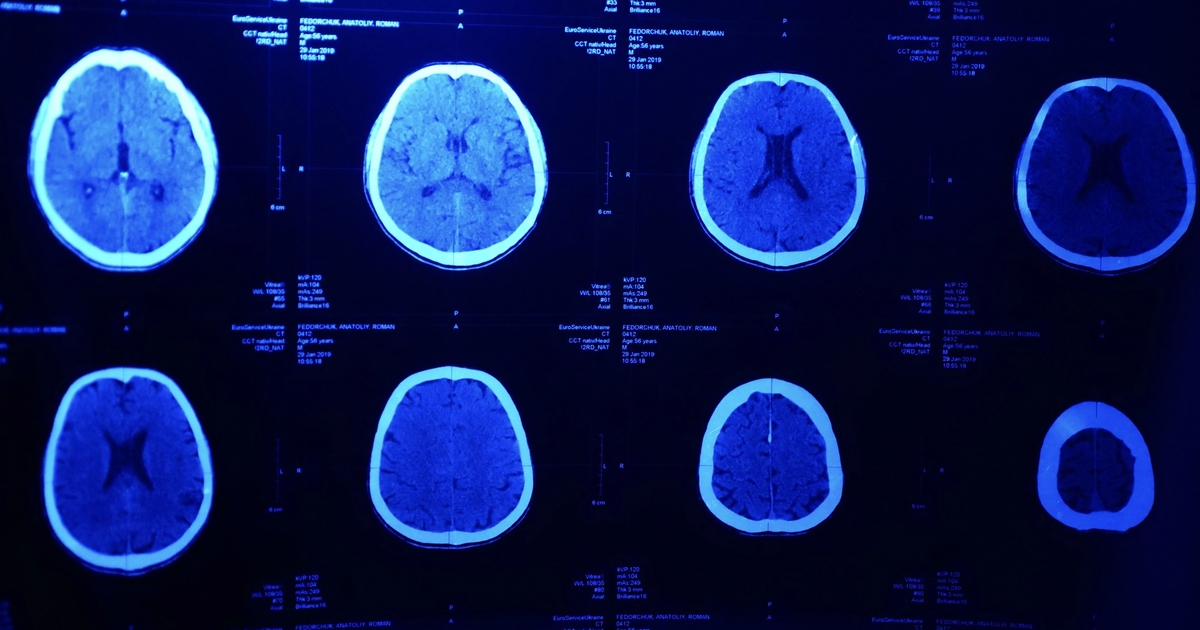Sixty-nine million people suffer a traumatic brain injury (TBI) every year. TBIs comprise any injury to the brain caused by an external force, with an increased risk attributed to traffic incidents, violence, and sports-related injuries.
The World Health Organization has identified such intracranial injuries as the leading cause of death and disability among individuals under 40. Peter Hutchinson, senior investigator at National Institute for Health and Care Researc, described this as a “global public health crisis hidden in plain sight.”
Despite those affected often facing long-term impairments, there is a lack of interventions capable of halting or reversing the damage.
Now, an EMBO Molecular Medicine study led by researchers at the Institute for Advanced Chemistry of Catalonia (IQAC-CSIC) and AivoCode, a biotech spinout founded by lead author Aman Mann, may have a solution. The paper presents CAQK, a tetrapeptide that protects the brain from knock-on effects of TBIs in mice – and even restores some of their lost functional abilities along the way.
Search and repair
The structural integrity of the blood-brain barrier (BBB) is often impaired following brain injury. While this can be problematic, the sudden localized permeability could present an opportunity for therapeutic intervention. A drug – a therapeutic peptide, for example – could infiltrate the BBB and have desired therapeutic effects.
CAQK is a tetrapeptide, meaning it consists of just four amino acids. Mann and his colleagues used in vivo phage display screening to identify molecular sequences that specifically recognize injured brain tissue.
“We might have found a new drug that could help TBI patients and perhaps also patients with other types of brain injuries, such as stroke.”
Their results, first published in Nature Communications, suggested that CAQK could be used to “accumulate in areas of brain injury upon intravenous administration” and operate as “a carrier to be used in site-specific delivery of drugs to brain injuries.”
These initial findings raised the question of whether CAQK could not only find the injury, but repair it, as well.
“Our original goal was to use CAQK peptide to deliver drugs to the TBI brain, but it turned out to have an intrinsic neuroprotective activity; it made TBI better all by itself without any drug,” Mann told BioXconomy. “This was not entirely unexpected because we have found similar intrinsic activities in our other homing peptides. This finding suggested the exciting possibility that we might have found a new drug that could help TBI patients and perhaps also patients with other types of brain injuries, such as stroke.”
Mann and colleagues put CAQK to the test in mouse models of traumatic brain injury in their EMBO study. When administered intravenously shortly after moderate or severe TBI, the peptide rapidly accumulated in the injured regions of the brain.
The researchers used imaging and histological analysis and observed that CAQK localized precisely to areas where the extracellular matrix had been disrupted. Specifically, they saw that CAQK binds to a glycoprotein complex that becomes highly upregulated after trauma.
“We had a cell line that the peptide bound to, so by using affinity chromatography and educated guesses, we were able to zero in on tenascin-C in the extracellular matrix complex as the target,” Mann explained.
Mice treated with CAQK showed significantly smaller lesion sizes compared to untreated controls, along with reduced inflammation and fewer apoptotic cells. The lower expression of inflammatory markers in the injured area indicated that CAQK alleviates neuroinflammation and further secondary injury.
Mann and his colleagues concluded CAQK has an “inherent neuroprotective role,” which “has potential as a new treatment for brain injuries and warrants further study.”
Bench to bedside
While the findings are encouraging, translating therapies from animal models to humans is an extremely difficult feat. A review published in Alternatives to Laboratory Animals reported that the failure rates for translating drugs from animal testing to human treatment remains at over 90%.
There are no effective drugs currently available to reduce the damage from a brain injury.
Mann acknowledges this challenge.
“The mouse work was rather straightforward and CAQK showed impressive efficacy in suppressing TBI injury,” he told us. “A more challenging question is whether this translates to similar activity in an animal with a brain more similar to the human brain than mouse brain.”
AivoCode has licensed CAQK and has a pig study underway with results expected within the next few months.
“There are no effective drugs currently available to reduce the damage from a brain injury,” he emphasized. “If the activity [of CAQK] first in pigs and then humans is similar to what we see in mice, it would be very significant.”
Pharmacokinetic and toxicology studies will also be required to establish human-equivalent dosing and long-term safety. Still, the team is optimistic.
“All indications from mouse and pig work are that CAQK has no toxicity issues, which was also confirmed in our preliminary toxicology studies,” Mann said. “This will need to be proven in GLP toxicology studies.”
“Provided that the pig studies are positive and AivoCode is able to raise the necessary funding, we are ready to proceed to the toxicology studies, an investigational new drug (IND), and first-in-human clinical trials.”

